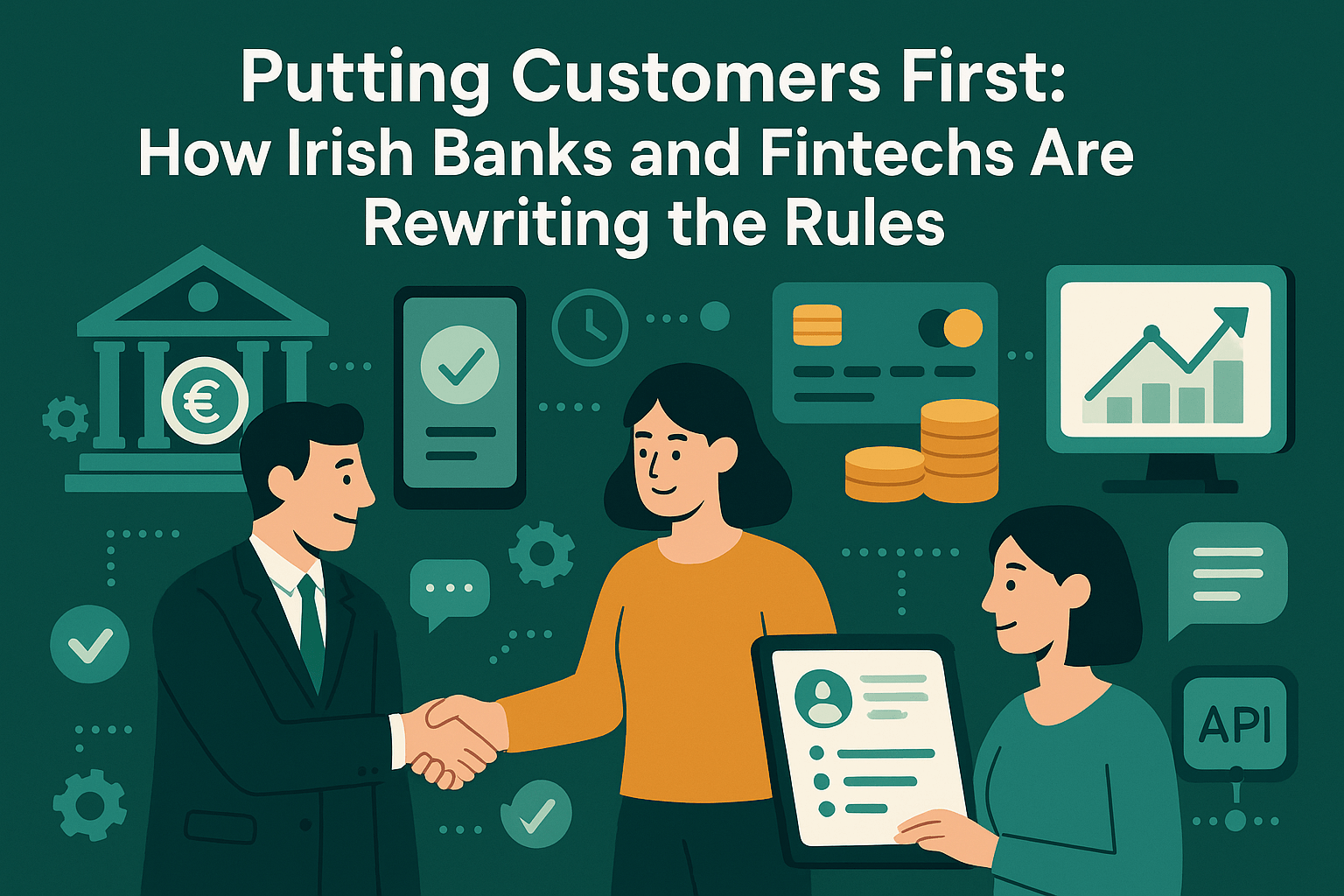The Shift in Power: From Product to Experience
For decades, banks competed with products - mortgages vs savings accounts, loan rates vs card perks. Today, competition happens in milliseconds: how fast you open an account (similar to how competition in online casinos goes - who can achieve the fastest withdrawal and so on), how seamless your app is, how visible your transaction fees are.
Irish fintech customers expect experiences akin to big tech: intuitive design, frictionless workflows, real-time feedback. When a bank app lags, when a form is too long, when a fee is hidden - users notice. And they will move.

Fintech and Banking: From Rivals to Teammates
In the early 2010s, fintechs in Ireland were disruptive startups — challenging banks with slick apps and novel services. But agility alone isn’t enough for scale.
Banks bring many advantages:
- regulatory know-how
- trust and credibility
- capital for large infrastructure
Fintechs bring UX, nimbleness, product focus, and speed. When these strengths combine — via partnerships, integration, shared platforms — the result is faster innovation and more resilient service delivery.
For example, some Irish banks have partnered with fintechs to offer faster remittances, better fraud detection tools, or instant-deposit features.
Why This Matters Now More Than Ever
Multiple forces converge:
- Regulatory pressure: EU frameworks increasingly demand protection for consumer data, strong anti-fraud measures, and transparency. Legacy banks without modern systems are at risk.
- Customer expectations have changed. A study cited by BDO shows that people now compare banks based on digital experience as much as interest rates. Convenience outranks many traditional indicators of trust.
- Global competition: Irish users can easily use non-Irish fintech or digital banks. If local banks don’t meet or exceed those benchmarks, they may lose customers.
Challenges on the Path
Even with strong incentives, the journey is not easy:
- Integration issues: Merging bank IT with fintech platforms can be messy. Ensuring compatibility, data safety, regulatory compliance is expensive and complex.
- Cultural resistance: Traditional banks often have legacy processes, cautious risk cultures and inertia. Adaptive digital minds sometimes clash with conservative compliance units.
- Cost & investment: Buying, building or licensing digital infrastructure, hiring UX designers, data scientists, cybersecurity experts — all carry high costs.
Where Ireland is Already Leading
Some promising stories:
- Regulatory sandboxes that allow fintechs and banks to test new products under oversight.
- Pairs like Bank of Ireland + fintech service providers collaborating on better user onboarding and mobile payment UX.
- Fintech Ireland’s ecosystem: hundreds of fintechs (local and international) operating from Ireland, indicating a healthy market that supports experimentation and growth.
Vision for the Future: What Customers Can Expect
Imagine this in the near future:
- Opening a bank account in under ten minutes through a mobile device, with digital ID.
- Real-time payments domestically and cross-border, visible in your transaction history instantly.
- Personalised financial advice via AI: alerts when spending too much, suggestions to optimise savings.
- Transparent pricing: no surprise fees, everything disclosed upfront.
- Seamless integration: your bank app, payment tools, investment platform, and budgeting tools all talking to each other securely via APIs.
Conclusion: Rewriting the Trust Contract
What this all suggests is a redefinition of what customers trust in a bank:
Historically, trust was built on bricks — the bank branch, the teller, the physical presence. Today, it’s built on bytes — how fast, how transparent, how reliable your digital service is.
In Ireland, the banks that embrace fintech collaboration will likely emerge not only more competitive, but more trusted. Because in 2025, the contract between customer and bank is no longer just about loans and savings: it is about speed, experience, and honesty.
